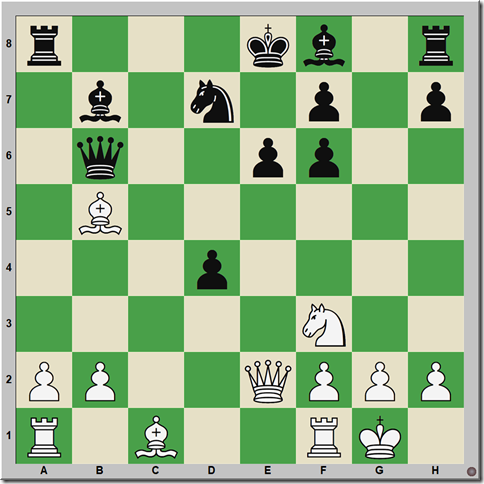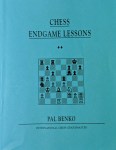This review has been printed in the February 2020 issue of Chess Life. A penultimate (and unedited) version of the review is reproduced here. Minor differences exist between this and the printed version. My thanks to the good folks at Chess Life for allowing me to do so.
———
Abeln, Michiel. The Anand Files: The World Championship Story, 2008-2012. Glasgow: Quality Chess, 2019. ISBN 978-1784830670. HB 512pp.
Anand, Viswanathan, and Susan Ninan. Mind Master: Winning Lessons from a Champion’s Life. India: Hachette India, 2019. ISBN 978-9351951506. HB 312pp.
ChessBase. Master Class: Viswanathan Anand. Available from chessbase.com
Viswanathan Anand, the 15th Classical World Chess Champion, turned 50 on December 11th. He is a rarity in modern chess, a middle-aged man who still competes at the highest levels. While Kramnik and Kasparov have both retired, and Topalov has abandoned any serious aspirations, Anand trudges on, ranked 13th in the world as of January 1st, and the only player above 2700 born before 1970.
There has been much celebration of Anand’s golden jubilee, and for good reason. The undisputed World Champion for six years, the winner of multiple rapid championships both official and unofficial, and the first Indian to earn the Grandmaster title, Anand is a giant of Indian sport. Without him and his success, I do not think the current explosion of chess in India would have taken place. Anand’s 50th birthday gives us a chance to rethink his place in the broader chess pantheon, and two new books have appeared that aid us in this task.
Michiel Abeln’s The Anand Files: The World Championship Story, 2008-2012 is a brilliant reconstruction of the inner workings of Team Anand in the 2008, 2010, and 2012 World Championship matches. The immense detail on display would be a marvelous accomplishment were Abeln an internal member of the team, but what makes the work so astounding is that he was not present for any of the events he describes. Through extensive interviews of Anand’s seconds and some impressive detective work, Abeln has produced one of the best match books in the history of chess literature.
What struck me most when reading The Anand Files was the unrelenting emphasis on opening preparation and engine analysis. I had always imagined that elite GMs have to memorize reams and reams of material, but it was shocking to read about preparation at the World Championship level. No wonder these guys want to play Fischer-Random!
Anand’s seconds made it a habit to download Internet blitz games played by well-known opening theoreticians, scouring them for hidden novelties. Individual analytical files were up to 8000 line moves long, more than 2.5 times the size of the most heavily annotated game in MegaBase. One 15th move alternative in the Slav alone required 5000 line moves to grasp, and the 3.f3 Anti-Grunfeld files in 2012 amounted to over 30,000 moves.
And then there was the grinding, unyielding effort put into Rustam Kazimdzhanov’s idea in the Meran Semi-Slav, covered in painstaking detail by Abeln and his sources.
“KASIM’S MERAN BABY” [D49]
Vladimir Kramnik (2772)
Viswanathan Anand (2783)
World-ch Bonn (3), 17.10.2008
1.d4 d5 2.c4 c6 3.Nf3 Nf6 4.Nc3 e6 5.e3 Nbd7 6.Bd3 dxc4 7.Bxc4 b5 8.Bd3 a6 9.e4 c5 10.e5 cxd4 11.Nxb5 axb5 12.exf6 gxf6 13.0–0 Qb6 14.Qe2 Bb7 15.Bxb5
“One of the key positions… Black’s king isn’t exactly safe in the center, but it was hoped that there was sufficient counterplay against the white king. The complete analysis covered 75 A4 pages…” (81–82, emphasis mine)
15…Bd6
In Game 5 Anand varied with 15…Rg8 (the original idea, temporarily shelved and then repaired in Bonn) 16.Bf4 Bd6 17.Bg3 f5 18.Rfc1 f4 19.Bh4 Be7 20.a4 Bxh4 21.Nxh4 Ke7 22.Ra3 Rac8 23.Rxc8 Rxc8 24.Ra1 Qc5 25.Qg4 Qe5 26.Nf3 Qf6 27.Re1 Rc5 28.b4 Rc3 29.Nxd4 Qxd4 30.Rd1 Nf6 31.Rxd4 Nxg4 32.Rd7+ Kf6 33.Rxb7 Rc1+ 34.Bf1 Ne3 35.fxe3 fxe3 0–1 Kramnik,V (2772)-Anand,V (2783) Bonn 2008.
16.Rd1 Rg8 17.g3 Rg4 18.Bf4 Bxf4 19.Nxd4 h5 20.Nxe6 fxe6 21.Rxd7 Kf8 22.Qd3 Rg7 23.Rxg7 Kxg7 24.gxf4 Rd8 25.Qe2 Kh6 26.Kf1 Rg8 27.a4 Bg2+ 28.Ke1 Bh3 29.Ra3 Rg1+ 30.Kd2 Qd4+ 31.Kc2 Bg4 32.f3 Bf5+ 33.Bd3 Bh3 34.a5 Rg2 35.a6 Rxe2+ 36.Bxe2 Bf5+ 37.Kb3 Qe3+ 38.Ka2 Qxe2 39.a7 Qc4+ 40.Ka1 Qf1+ 41.Ka2 Bb1+ 0–1
What was already difficult in Bonn became only harder in Sofia (2010) and Moscow (2012), and Anand’s near-eidetic memory could not keep up with the avalanche of engine-checked analysis his team produced. This is seen most clearly in the 2012 match with Gelfand, where Anand repeatedly misremembered details of his preparation, leading his seconds to refocus and streamline their summaries.
Abeln does a tremendous job of capturing the intra-team dynamics in each match – readers really do feel like those proverbial flies on the wall! – and he went so far as to study the post-match games of Anand’s seconds with the idea of discerning unused match prep. (In contrast to years past, today’s seconds are often allowed to use “unexploded” novelties by their employers.) We are privy to the surprising offers of assistance from Kasparov and Kramnik in 2010, the team’s struggles in 2012, and day-by-day accounts of key decisions and choices. Not many chess books are proverbial page-turners. This one is.
The Anand Files is a triumph, beautifully written and accompanied by than one hundred full-color photos. Abeln has done his subject justice, and the only flaw in the work is that it ends. This is a book that every serious fan will enjoy.
For those looking for a broader sense of Anand’s life and thinking, there is Mind Master: Winning Lessons from a Champion’s Life, co-written with Susan Ninan and published on December 13th, just two days after his 50th birthday.
Mind Master is structured as a series of “lessons learned” across Anand’s career, all clearly pitched as that intersection between business and self-help books. I sincerely doubt that any executive will find any real insight into best business practices here, and the tacked-on lessons at the end of each chapter ring hollow from that perspective. But read as an autobiography of sorts, Mind Master is a thoroughly enjoyable book.
The general outlines of Anand’s career – learning chess from his mother and a Manila TV show, the youthful speed of his play, his mid-90s battles with Kamsky and Kasparov, and the great successes of the early 2000s – are well-known, but his own telling of the tales is typically modest and without artifice. To his credit, he doesn’t shy away from difficult moments, and the resulting picture is that of a wholly decent and honorable man.
It is interesting to juxtapose Anand’s accounts of the World Championship matches (chapters 9-11) with Abeln’s, but my favorite parts of Mind Master deals with what happened after the Gelfand victory. Anand is honest about the difficulties of aging, how Carlsen had grown stronger while his strength dwindled, and how Carlsen fully deserved to defeat him in Chennai and Sochi. In chapter eight we get one of the first top-level accounts of what Leela and AI mean for chess today.
Hampered by its artificial structure, Mind Master is still a book worth reading. It fleshes out Wikipedia-style accounts of Anand’s career, and it puts a very likeable, human face on a chess Olympian. Your game won’t improve after reading it, but your perspective on your wins and losses might.
In preparing this month’s column, I played through hundreds of Anand’s games, using the new Master Class: Viswanathan Anand DVD from ChessBase as my primary source. This is the 12th edition in the Master Class series devoted to the world champions (and ‘unofficial’ champion Paul Morphy). Each DVD includes the player’s collected games along with multiple hours of video instruction.
Master Class: Viswanathan Anand contains 3940 games, 1180 of them annotated, alongside 457 tactics training questions and roughly seven hours of video from Mihail Marin (strategy) Karsten Müller (endings), Yannick Pelletier (openings), and Oliver Reeh (tactics). It is odd that Marin highlights Anand’s match win over Kramnik while neglecting to discuss any of the games, but Müller’s contributions are of his typical high quality.
Here’s an example, where we see Anand’s bishops act like “swarming midges” in this neat endgame win over Joel Lautier.
SWARMING MIDGES
Viswanathan Anand (2725)
Joel Lautier (2645)
PCA/Intel-GP London (1), 08.1995
34. Bxb7! Kd7
34. … Nxb7? loses to 35. a6 Kd7 36. a7, while 34. … Bxc2 lets the pawn run with 35. a6.
35. Bb4
The second midge attacks!
35. … Kc7
35. … Nxb7 is still a blunder: 36. a6 Kc7 37. a7+–
36. Bd5 Na6 37. c3 Nxb4 38. cxb4 c3 39. Ke3 Kd6 40. Bf3
40. a6! is faster. Now if 40. … Kxd5? 41. a7.
40. … h5 41. a6 1–0
One of the difficulties with this DVD is that it treats an active player, so almost as soon as it is released, it is out of date. The games collection is current through July 2019, but already there are more than 100 new Anand games in MegaBase, and there are none in Master Class: Viswanathan Anand that are not in MegaBase as well. Not everyone owns MegaBase, of course, but Anand fans will have to decide if the videos warrant purchase of this interesting but inessential product.











